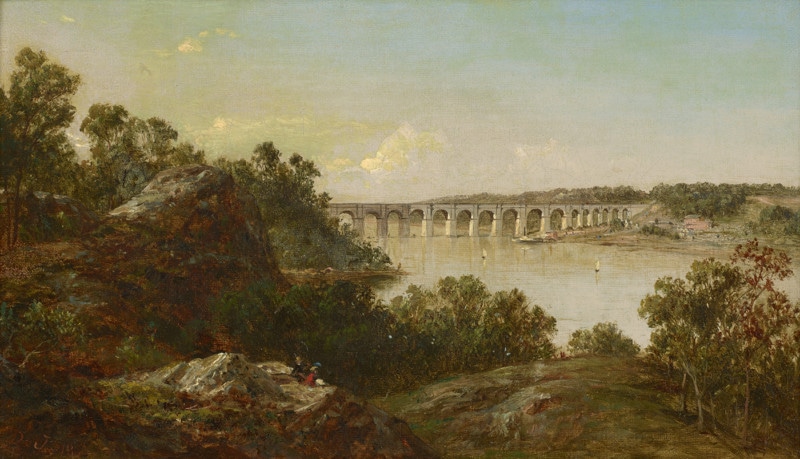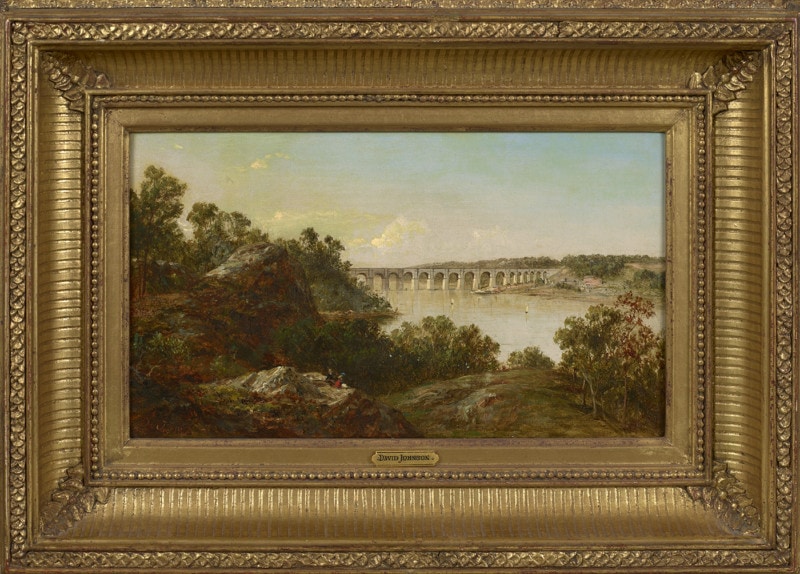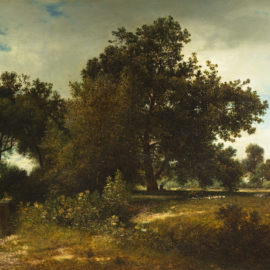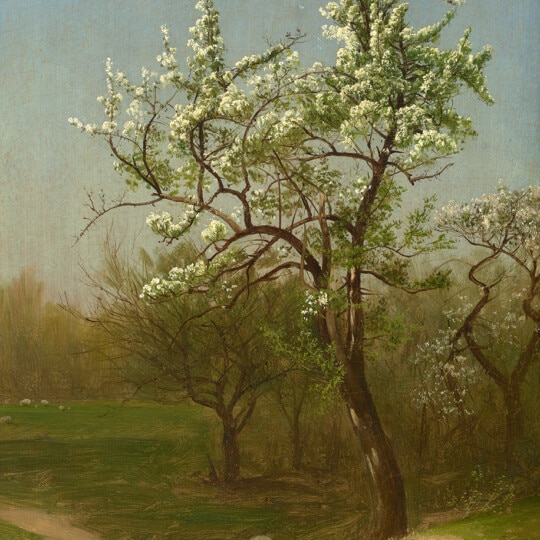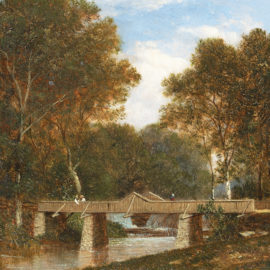SOLD Harlem River Aqueduct, 1860
by David Johnson (1827–1908)7½ x 12⅞ inches
Initialed and dated lower left: D. J. 1860.
SOLD
Information
Provenance
(Possibly) O. M. Fitch, 1861
Rabin-Krueger Gallery, Newark, New Jersey, by 1960
Hirschl & Adler Galleries, New York, New York
Sale, Sotheby’s, New York, New York, May 29, 1986, lot 33
Hirschl & Adler Galleries, New York, New York, by 1986
Private collection, Bethesda, Maryland, acquired from above, 1989
Exhibited
(Possibly) Thirty-Sixth Annual Exhibition, National Academy of Design, New York, New York, March 20–April 25, 1861, no. 391 (as Scene on the Harlem River)
Nature Transcribed: The Landscapes and Still Lifes of David Johnson (1827–1908), Herbert F. Johnson Museum of Art, Ithaca, New York, November 5–December 23, 1988; University of Maryland Art Gallery, College Park, Maryland, February 1–March 5, 1989; Georgia Museum of Art, Athens, Georgia, April 1–May 7, 1989; National Academy of Design, New York, New York, July 10–September 10, 1989, no. 8
The Old Croton Aqueduct: Rural Resources Meet Urban Needs, Hudson River Museum, Yonkers, New York, October 2, 1992–February 7, 1993
Literature
Gwendolyn Owens, Nature Transcribed: The Landscapes and Still Lifes of David Johnson (1827–1908) (Ithaca, NY: Herbert F. Johnson Museum of Art, 1988), 24–26, 65, 73, no. 8.
The Old Croton Aqueduct: Rural Resources Meet Urban Needs (Yonkers, NY: Hudson River Museum, 1992), 53–54, 56, 63, fig. 50.
Related Work
High Bridge, ca. 1860, oil on paper, 4¾ x 3¾ inches; Private collection, as reproduced in The Old Croton Aqueduct: Rural Resources Meet Urban Needs (Yonkers, NY: Hudson River Museum, 1992), cover.
Note: Johnson became interested in bridges in 1860, at which time he began painting the Harlem River Aqueduct (New York) and Natural Bridge (Virginia). The Harlem River Aqueduct, also known as the High Bridge, was built in the mid-19th century to bring water from upstate New York to New York City. Its design is highly reminiscent of the ancient Roman aqueducts.[1]
[1] Gwendolyn Owens, Nature Transcribed: The Landscapes and Still Lifes of David Johnson (1827–1908) (Ithaca, NY: Herbert F. Johnson Museum of Art, 1988), 24.Artist Biography
As a second-generation member of the Hudson River School, David Johnson experienced artistic success during the second half of the nineteenth century. The style of his rocky landscape scenes tended to coincide with whatever genre the current art market dictated as on trend, with his later works demonstrating a distinctly luminist influence.
By Chelsea DeLay
I. Biography
II. Chronology
III. Collections
IV. Exhibitions
V. Memberships
VI. Suggested Resources
VII. Notes
I. Biography
Born in New York City on May 10, 1827, David Johnson went on to become a skilled landscape artist who led a relatively quiet life.[1] Johnson was essentially a self-taught
This painting is no longer available. Please contact us for similar works or more information.

